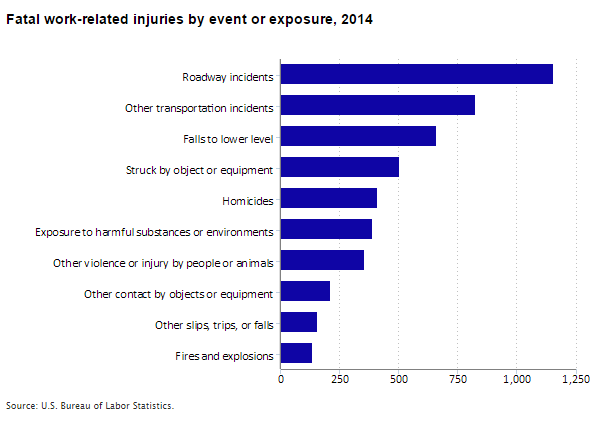As summer begins, many of us start thinking about vacation travel. Whenever my family and I go somewhere in a car, I usually don’t think of it as risky. Indeed, over the past couple of decades, traffic safety has improved markedly. Beginning in 2011, traffic incidents were no longer the leading cause of death from injury in the United States, according to the National Center for Health Statistics. Despite this progress, BLS data show that transportation incidents continue to be the leading cause of fatal work-related injuries in the United States.
As with so many other risks, we need good data to reduce work-related traffic deaths. Today I’ll highlight a new multi-agency project that links existing datasets to produce rich new insights to help keep employees safer on the road.

Safety professionals have long considered the BLS Census of Fatal Occupational Injuries to be the most complete, accurate, and well-documented count of all types of fatal work injuries. We use a broad range of documents to identify fatal injuries and verify they are work related. We can identify work-related cases that may not be obvious. One example is a person traveling for work but not in a work vehicle. Another example is a commute to work in which the person was also running a work-related errand along the way. For all of these cases, we also collect information on the nature of the injury and the demographic and employment characteristics of the person who died.
The National Highway Traffic Safety Administration is another great source of traffic safety data. Their Fatality Analysis Recording System (FARS) has rich detail on crashes. FARS captures complete data for all vehicles involved in a crash and their occupants. The BLS data, by comparison, only include the vehicle of the person who died and the vehicle or other object it crashed into. The FARS data tell us more about the risks involved in the incident, including road conditions, use of safety equipment, and even driver behavior such as cell phone use.
While research with both datasets has helped to improve traffic safety, neither dataset has complete detail. Over the last several years, BLS has been collaborating with the National Highway Traffic Safety Administration and the National Institute for Occupational Safety and Health to merge the data.
The combined dataset provides the accident detail of FARS with the BLS information on the people who died and their jobs. For 2010, researchers matched 91 percent of the 1,044 roadway death cases from the BLS data to a FARS case. BLS researchers will continue to work with their colleagues in the other agencies to analyze the data and gain new safety insights.
The research team published an article recently in Accident Analysis and Prevention to explain how they matched the data from the two sources. The team also has begun a second article to analyze 3 years of the combined data. This project has given us the most detailed and complete look at fatal work-related traffic crashes in the United States. We are excited to gain these new insights into traffic safety. It makes me proud to see top-notch researchers from different agencies work together to understand and solve some of our nation’s most challenging problems. It’s another example of how we strive to use your data dollars more effectively to produce gold-standard information.
 United States Department of Labor
United States Department of Labor